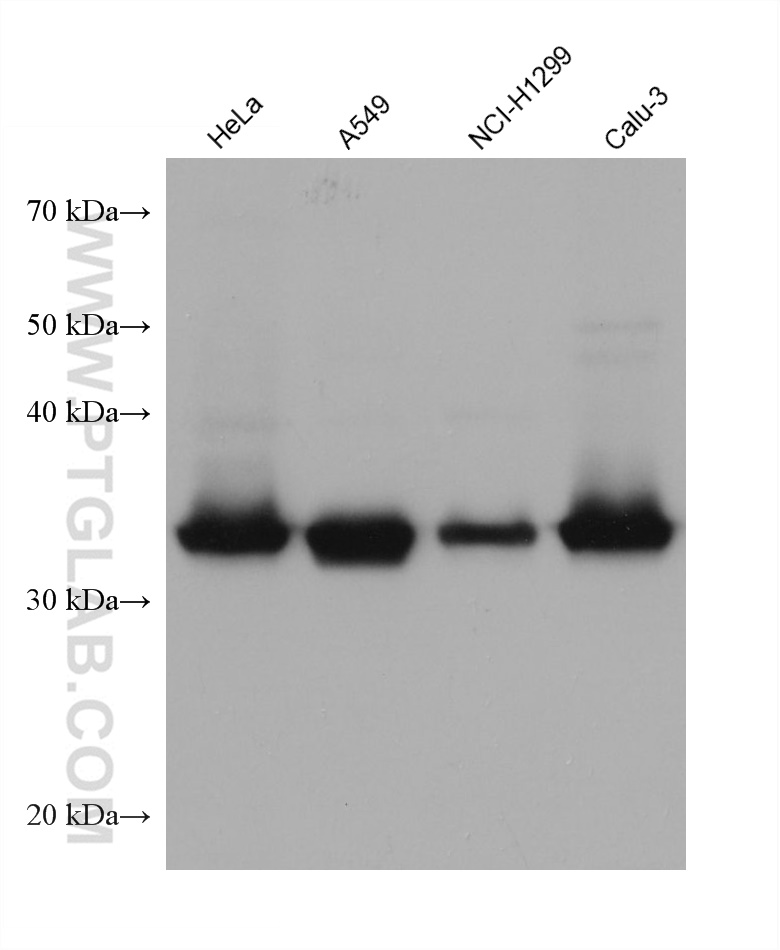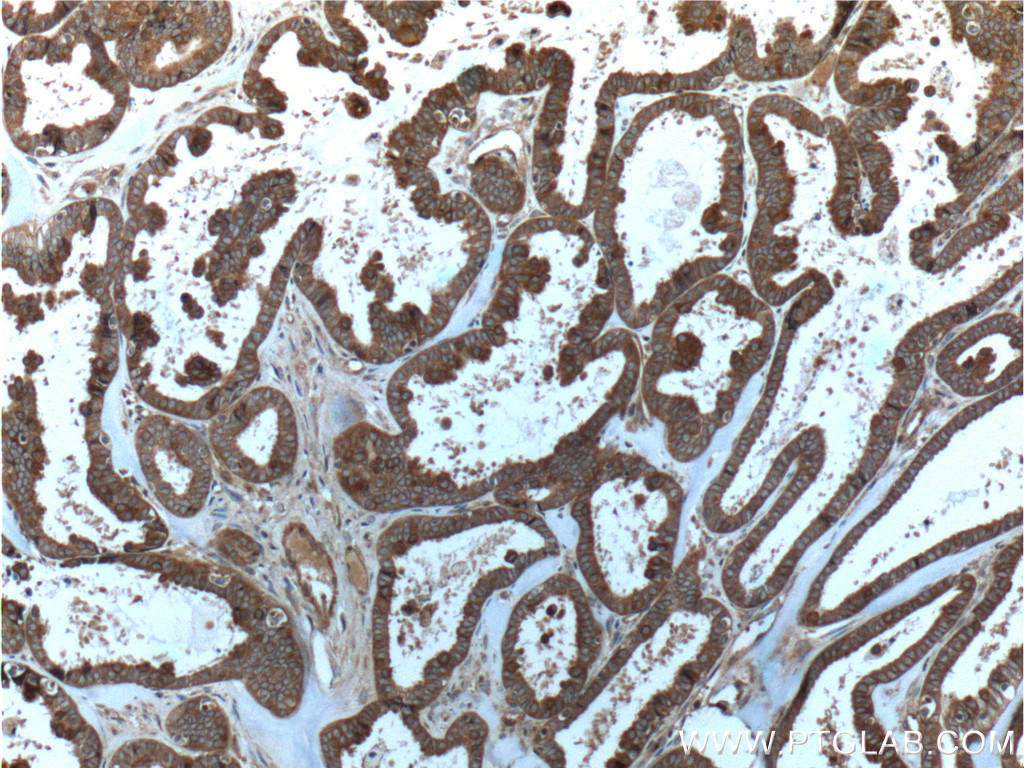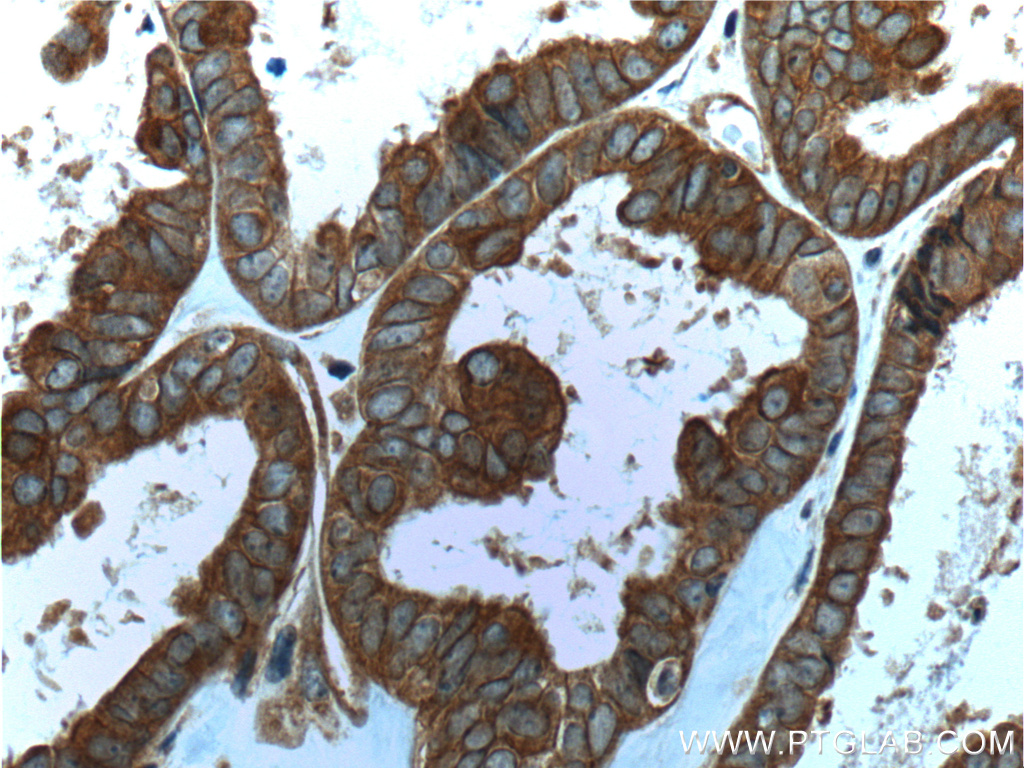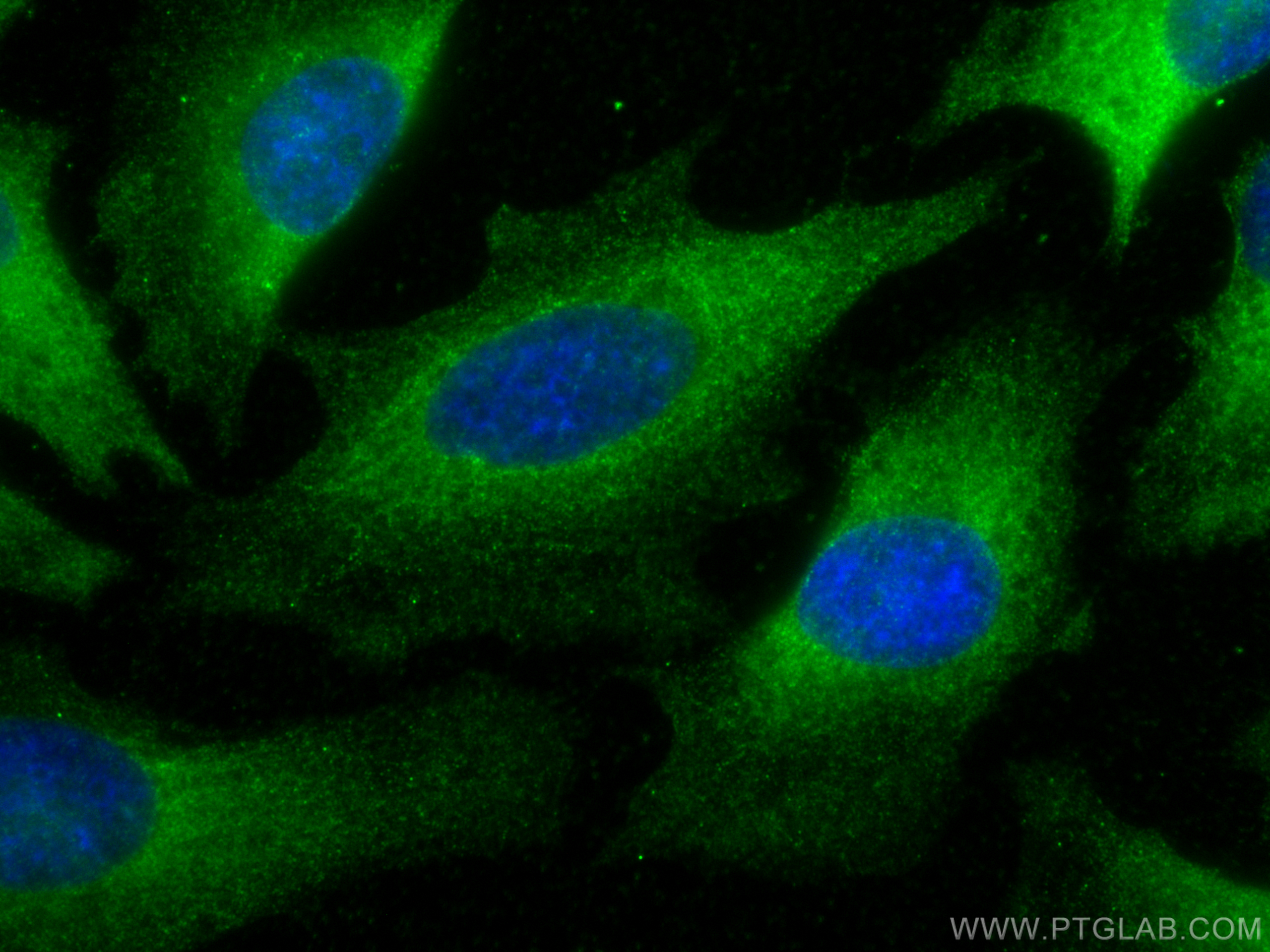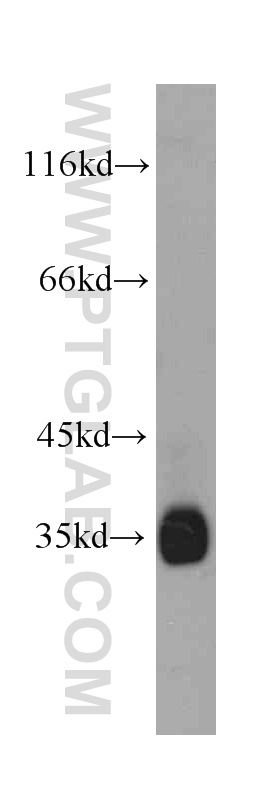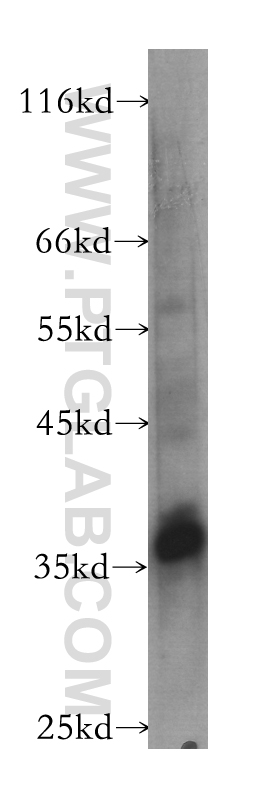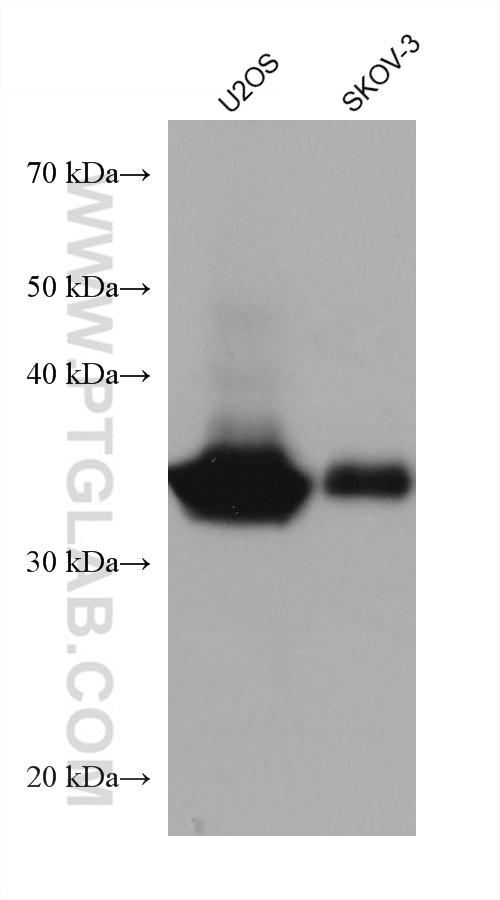验证数据展示
经过测试的应用
| Positive WB detected in | HeLa cells, HepG2 cells, Raji cells, U2OS cells, SKOV-3 cells, A549 cells, NCI-H1299 cells, Calu-3 cells |
| Positive IHC detected in | human ovary tumor tissue Note: suggested antigen retrieval with TE buffer pH 9.0; (*) Alternatively, antigen retrieval may be performed with citrate buffer pH 6.0 |
| Positive IF/ICC detected in | HeLa cells |
推荐稀释比
| 应用 | 推荐稀释比 |
|---|---|
| Western Blot (WB) | WB : 1:1000-1:6000 |
| Immunohistochemistry (IHC) | IHC : 1:50-1:500 |
| Immunofluorescence (IF)/ICC | IF/ICC : 1:400-1:1600 |
| It is recommended that this reagent should be titrated in each testing system to obtain optimal results. | |
| Sample-dependent, Check data in validation data gallery. | |
产品信息
60060-1-Ig targets Follistatin in WB, IHC, IF/ICC, ELISA applications and shows reactivity with human samples.
| 经测试应用 | WB, IHC, IF/ICC, ELISA Application Description |
| 文献引用应用 | WB, IHC, IF |
| 经测试反应性 | human |
| 文献引用反应性 | human, mouse, rat, camel |
| 免疫原 |
CatNo: Ag0775 Product name: Recombinant human FST protein Source: e coli.-derived, PGEX-4T Tag: GST Domain: 1-344 aa of BC004107 Sequence: MVRARHQPGGLCLLLLLLCQFMEDRSAQAGNCWLRQAKNGRCQVLYKTELSKEECCSTGRLSTSWTEEDVNDNTLFKWMIFNGGAPNCIPCKETCENVDCGPGKKCRMNKKNKPRCVCAPDCSNITWKGPVCGLDGKTYRNECALLKARCKEQPELEVQYQGRCKKTCRDVFCPGSSTCVVDQTNNAYCVTCNRICPEPASSEQYLCGNDGVTYSSACHLRKATCLLGRSIGLAYEGKCIKAKSCEDIQCTGGKKCLWDFKVGRGRCSLCDELCPDSKSDEPVCASDNATYASECAMKEAACSSGVLLEVKHSGSCNSISEDTEEEEEDEDQDYSFPISSILEW 种属同源性预测 |
| 宿主/亚型 | Mouse / IgG2b |
| 抗体类别 | Monoclonal |
| 产品类型 | Antibody |
| 全称 | follistatin |
| 别名 | FST, FS, Activin-binding protein, Activin binding protein, 4E9B10 |
| 计算分子量 | 33 aa, 7 kDa |
| 观测分子量 | 35 kDa |
| GenBank蛋白编号 | BC004107 |
| 基因名称 | Follistatin |
| Gene ID (NCBI) | 10468 |
| RRID | AB_2106706 |
| 偶联类型 | Unconjugated |
| 形式 | Liquid |
| 纯化方式 | Protein A purification |
| UNIPROT ID | P19883 |
| 储存缓冲液 | PBS with 0.02% sodium azide and 50% glycerol, pH 7.3. |
| 储存条件 | Store at -20°C. Stable for one year after shipment. Aliquoting is unnecessary for -20oC storage. |
背景介绍
Follistatin (FST) is a member of the tissue growth factor β family and is a secreted glycoprotein that antagonizes many members of the family, including activin A, growth differentiation factor11 , and myostatin. It binds activin A with high affinity and whose expression can be induced by activin A and several other pro-inflammatory cytokines. Activin A-follistatin complexes are biologically inactive and bind to cell surface heparan sulphate-containing proteoglycans for internalisation and degradation. It has also been found to play a significant role in the management of skeletal muscle size and mass. It also has important roles in early embryonic development, differentiation of ovarian granulosa cells, liver fibrosis and polycystic ovarian syndrome. FS 288 glycosylation results in a major species of 35 kDa and a less abundant 40 kDa and minor products of 40 and 42 kDa (PMID: 9785474). Three typical follistatin bands are at 32, 35, and 39 kDa (PMID: 2036994).
实验方案
| Product Specific Protocols | |
|---|---|
| IF protocol for Follistatin antibody 60060-1-Ig | Download protocol |
| IHC protocol for Follistatin antibody 60060-1-Ig | Download protocol |
| WB protocol for Follistatin antibody 60060-1-Ig | Download protocol |
| Standard Protocols | |
|---|---|
| Click here to view our Standard Protocols |
发表文章
| Species | Application | Title |
|---|---|---|
Cells Tubule-Derived Follistatin Is Increased in the Urine of Rats with Renal Ischemia and Reflects the Severity of Acute Tubular Damage | ||
Antioxid Redox Signal Follistatin Protects against Glomerular Mesangial Cell Apoptosis and Oxidative Stress to Ameliorate Chronic Kidney Disease. | ||
Front Pharmacol Follistatin Attenuates Myocardial Fibrosis in Diabetic Cardiomyopathy via the TGF-β-Smad3 Pathway. | ||
Fertil Steril Myostatin, follistatin and activin type II receptors are highly expressed in adenomyosis. | ||
PeerJ Development of a gene doping detection method to detect overexpressed human follistatin using an adenovirus vector in mice. | ||
Animals (Basel) Screening and Identification of Differential Ovarian Proteins before and after Induced Ovulation via Seminal Plasma in Bactrian Camels. |

